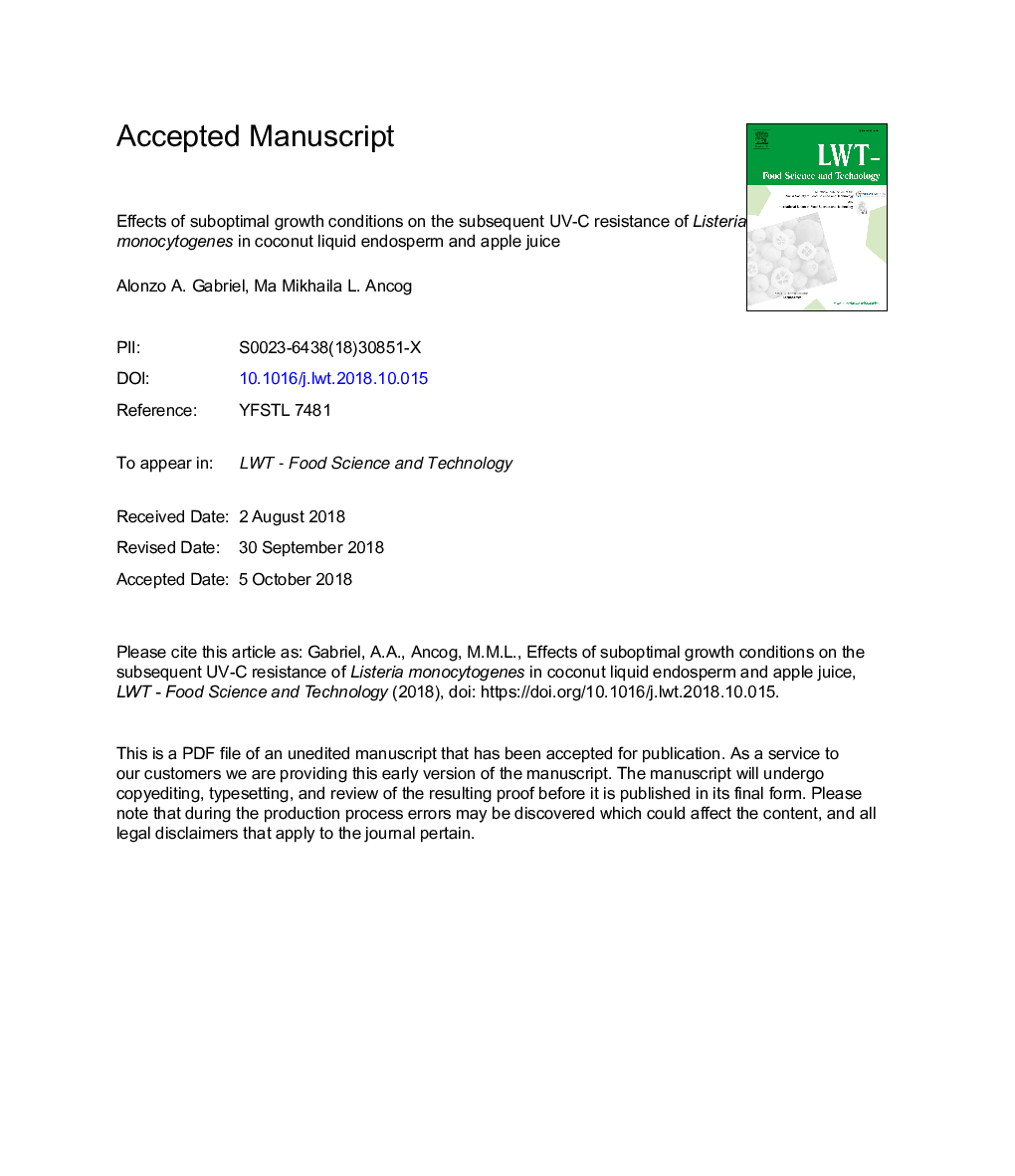| Article ID | Journal | Published Year | Pages | File Type |
|---|---|---|---|---|
| 11024900 | LWT - Food Science and Technology | 2019 | 28 Pages |
Abstract
This study determined the ultraviolet-C (UVC) resistance of Listeria monocytogenes in coconut liquid endosperm and apple juice after previous exposures to suboptimal growth conditions. L. monocytogenes 1/2c and 4b strains were individually exposed to gradual acidification (final pH 4.5), desiccation (aw 0.96), heating (40â¯Â°C), and all their simultaneous combinations. Results showed that regardless of prior growth conditions and fruit beverage suspending medium, L. monocytogenes exhibited log-linear inactivation behavior. The UV-C energy dose necessary to reduce microbial population by 1 log cycle (DUV-C) varied across growth conditions and between fruit beverages. Regardless of growth condition, L. monocytogenes exhibited greater resistance in apple juice. In coconut liquid endosperm, the greatest UV-C resistance was observed in cells previously exposed to acidification and heat (A+H) (DUV-C 37.32â¯mJ/cm2), while cells previously exposed to acidification and desiccation (A+D) exhibited the greatest resistance to UV-C in apple juice (DUV-C 726.76â¯mJ/cm2). L. monocytogenes exhibited least UV-C resistance in coconut when previously exposed to heating (DUV-C 25.40â¯mJ/cm2), while exposure to A+H resulted in least UV-C resistance when suspended in apple juice (DUV-C 298.81â¯mJ/cm2). These results suggest that in addition to intrinsic suspending medium properties, implicit microbial physiology also affect the efficacy of UV-C treatment.
Keywords
Related Topics
Life Sciences
Agricultural and Biological Sciences
Food Science
Authors
Alonzo A. Gabriel, Ma. Mikhaila L. Ancog,
